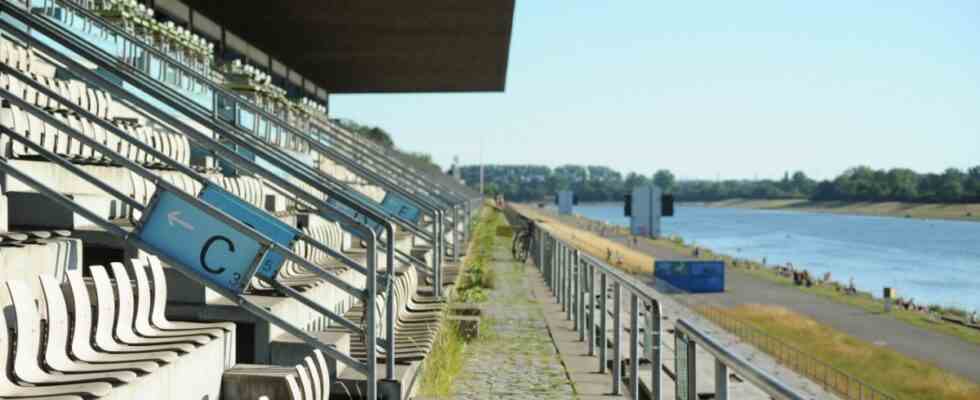The direction that this appointment would take in the late morning on the grounds of the traditional Olympic equestrian center in Munich-Riem was relatively clear – she had anticipated the striking motto: “Secure the future of Bavarian top sports facilities”, was the keyword under which the Bavarian State Sports Association had invited to talks with Bavaria’s Minister of the Interior and Sports, Joachim Herrmann (CSU).
Specifically, it was about three beacons of Bavarian sport: the bobsleigh track at Königssee, the upper part of which was destroyed after a severe storm in mid-July 2021; the Olympic regatta course in Oberschleißheim, which has existed since 1972 and which, although it hosted the European Championships in canoeing and rowing last summer, has long since been in need of renovation; and the Olympic riding facility in Riem, on the site of which the city of Munich would like to build expensive housing.
The regatta course is considered by the athletes to be one of the best in Europe and unique in southern Germany, the Olympic riding facility is, as Gerhard Eck, President of the Bavarian Riding and Driving Association said on Monday, “the best-preserved equestrian sports center in Europe” for the Olympic Games. And the track in Königssee not only operates as the oldest artificial ice track in the world, but also as “the largest medal factory in Germany”, as Minister Herrmann swears.
After all, the Free State does not have to worry about them, at least in financial terms. It is clear that the federal government is providing 53 million euros from its reconstruction fund, “so there is no need for sports funding from the Free State,” said Herrmann. There is talk of the end of 2024 as the start of renovation, and not only that: the first climate-neutral ice rink in the world is to be built in Königssee. However, conservationists and environmentalists are still not convinced of the sustainability of the project. And the operators are running out of time, because their talents will probably have to move to other locations in Innsbruck, Italy or in Oberhof in Thuringia for a longer period of time.
For a long time, the Olympic riding facility was a big question as to whether it had to give way completely to housing and move, as the city had wanted. “This cannot be reasonably represented in terms of the concept, and in terms of urban planning very large green areas and aisles were planned anyway,” said Herrmann on Monday and emphasized that, in coordination with the city, there will be areas for housing construction, “the core substance of the equestrian areas but preserved”. Sports official Eck was more specific: “It is with a heavy heart that it is possible to give up five or six hectares without the site being cut up. But we would prefer to keep the facility in its entirety.”
Nine million euros of the originally planned around 100 million euros are left for the renovation of the Oberschleißheim regatta course as a result of the corona pandemic.
(Photo: Stephan Rumpf)
The future of the regatta facility looks the most complicated. The major renovation that the city had planned for the dilapidated buildings has been off the table since 2021. Nine million euros instead of the originally planned around 100 million are left due to empty coffers due to the corona pandemic – and this money has almost been eaten up by embellishments for the championships. “It’s a tragedy that endangers the future of rowing and canoeing throughout Bavaria,” says Willi Bock, chairman of the Munich Rowing Society 72. Minister Herrmann sees – once again – Munich as the owner of the train, a concept for the now listed to develop facility.
“I hope that the state capital, which has a special responsibility, can pull itself together to advance the issue,” Herrmann told the SZ: “We as a Free State are ready to get involved and think about special funding.” Meanwhile, those in charge, like that Southgerman newspaper learned on Monday that the 2024 Rowing World Cup will be returned – due to the lack of a grandstand. The existing, monumental seating area may not be entered.

